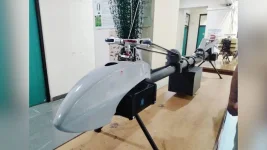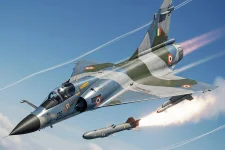The Royal Thai Air Force (RTAF) recently convened a significant conference to dissect the tactical successes of the Indian Air Force (IAF) during the May 2025 India-Pakistan conflict.
Senior Thai officials praised the IAF's "Operation Sindoor" as a masterclass in modern aerial warfare, highlighting its precision-strike capabilities and formidable, multi-layered air defence network that resulted in a decisive outcome with no acknowledged Indian losses.
At the conference, RTAF Deputy Chief of Air Staff for Intelligence, Sommai Leelitham, provided a detailed analysis, commending the IAF for its flawless execution of deep-strike missions against multiple Pakistan Air Force (PAF) bases.
He noted that the operation exposed critical vulnerabilities in Pakistan's air defence and demonstrated a major tactical evolution by India, setting a new benchmark for air combat in the region.
Operation Sindoor was launched by India on May 7, 2025, as a retaliatory measure following a terrorist attack in Pahalgam, Jammu and Kashmir, on April 22, which resulted in 26 civilian fatalities.
Over a four-day period, the IAF systematically targeted 11 of Pakistan's 13 primary airbases, including key installations at Rawalpindi, Shorkot, and Sargodha, along with crucial radar facilities.
The strikes successfully neutralised runways, command centres, and high-value assets, most notably a Swedish-made Saab 2000 Erieye airborne early warning and control (AEW&C) aircraft.
Leelitham underscored the IAF's sophisticated use of advanced weaponry, which proved instrumental to the operation's success. The strikes utilised a combination of the BrahMos supersonic cruise missile, the French-made SCALP air-launched cruise missile, and Israeli-origin Harop "kamikaze" drones.
This arsenal allowed the IAF to penetrate deep into fortified airspace with pinpoint accuracy, revealing significant gaps in Pakistan’s Chinese-supplied HQ-9 air defence systems, which failed to intercept the incoming threats.
A key focus of the RTAF's analysis was the IAF's strategic departure from previous engagements. Unlike the 2019 Balakot airstrike, Operation Sindoor featured a complex, multi-layered approach.
The IAF reportedly deployed decoy aircraft to trigger Pakistani radar systems, revealing their locations. These sites were then targeted and neutralised by Harop loitering munitions, which are designed to independently search for and destroy radar emitters.
This cleared a safe corridor for strike packages of Su-30MKI, Rafale, and Mirage 2000 jets to launch their primary munitions. The main phase of the operation was reportedly completed in just 23 minutes.
The conference identified India's S-400 air defence system as a pivotal element in the conflict. This long-range surface-to-air missile system, capable of engaging threats up to 400 km away, was credited with destroying the PAF's Saab 2000 Erieye AEW&C—a critical "eye-in-the-sky" asset—while it was on the ground at Bholari airbase.
The S-400, integrated with India’s indigenous Integrated Air Command and Control System (IACCS), created a nearly impenetrable air defence shield, successfully detecting and thwarting 26 separate PAF intrusion attempts on May 10 alone.
Satellite imagery from commercial providers like Maxar Technologies confirmed the extensive damage to PAF infrastructure, including large craters on runways and destroyed hangars and radar stations.
The failure of Pakistan's Chinese-made hardware, including the HQ-9 and the PL-15 missiles equipped on its JF-17 Block III fighters, to counter the IAF's low-flying, high-speed missiles and drones was a central point of discussion, raising questions about the reliability of Chinese military technology on the export market.
According to air warfare historian Tom Cooper, the PAF's losses were substantial, including a Mirage-5, two JF-17s, an F-16, a C-130 transport aircraft, and the invaluable AEW&C plane.
The estimated cost of repairs, running into billions of dollars, combined with the operational setback of at least five years, has placed significant strain on Pakistan amid its ongoing economic challenges.
The RTAF conference concluded that Operation Sindoor serves as a vital case study for air forces globally. Leelitham emphasised that the IAF's ability to conduct such a complex operation without any combat losses, showcased India's significant technological and operational superiority.
While Pakistani claims of downing six Indian jets were widely dismissed as propaganda, the Operation Sindoor has cemented its place as a benchmark for 21st-century air power.
- Read in Other Language
- Hindi







